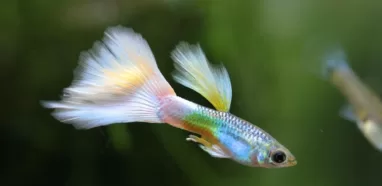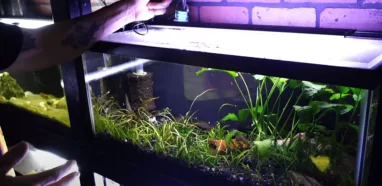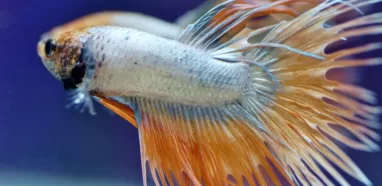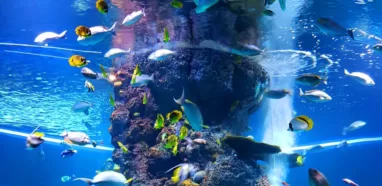Is your tank infested with detritus worms?
Detritus worms in the fish tanks are a serious problem once their population grows and they start compromising the quality of water. This is one of the most common issues that fish keepers usually deal with. Despite being harmless, you should never let detritus worms fester due to their fast reproduction rate.
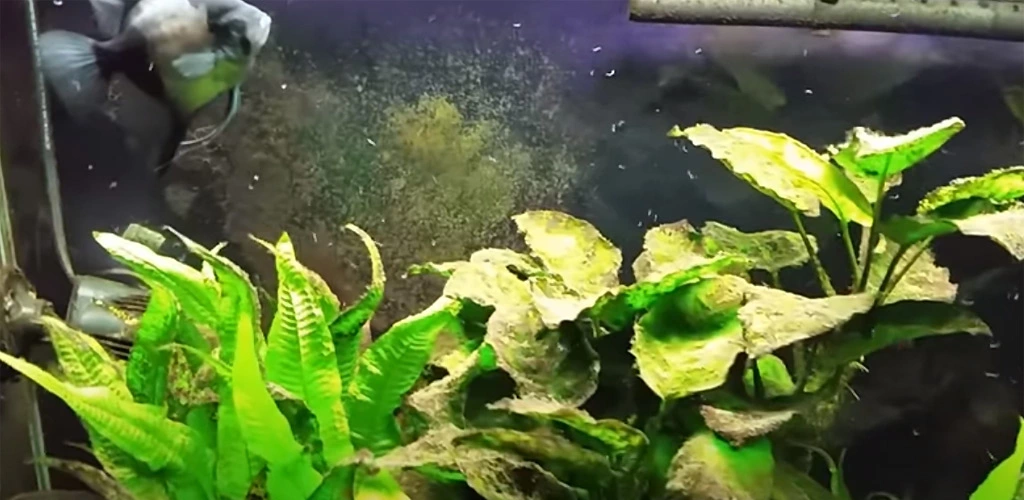
Learning how to get rid of detritus worms can be a bit challenging but thankfully, there are several things you can do to prevent future infestations. Here are a few methods you can try:
Table of Contents
Change the tank’s water
The first one is quite self-explanatory. Changing the water is the easiest and simplest solution if detritus worms have infested your aquarium. It means you need to completely replace the water in your aquarium.
You can start first by putting your aquarium animals in separate temporary tanks. After this, you can now remove the pebbles, gravel, all plants, and other accessories. It is recommended that you scrub the aquarium clean and wash all the plants and stones.
Replace the tank water and rearrange the plants, accessories, and gravel before you set up the filter. The aquarium fish can be reintroduced back to the tank but ensure that no detritus worm is added.
It is also the perfect time for you to check the fish affected by detritus worms so you can separate them for treatment.
This can be followed by 30% water change every 3 to 4 days to eliminate infestations of detritus worms and remove any remaining ones.
Use your gravel vacuum on a regular basis
A gravel vacuum can come in handy every time you clean your aquarium and maintain it between the water changes.
These tools are great for removing fish waste and food debris that sunk to the bottom of the aquarium and got trapped and stuck between stones. Most of the time, if waste and food are left for a long time, these can rot and release dangerous ammonia and contaminants that can compromise water quality.
You can also use a gravel vacuum for cleaning out detritus worms. You can use the tool for cleaning up most of these worms with no need for you to do any major water change. A gravel vacuum is beneficial if you use it on the sides of the tank glass, below the gravel, and on the plants.
According to keepers, regular gravel vacuuming is one foolproof way to ward off worms lying at the bottom of the tank, especially since they thrive on food remnants and debris lying on the substrate.
What makes the gravel vacuum the best choice is that there is no need for you to move out your aquarium animals at all.
Take advantage of some hydrogen peroxide
The method might be a bit extreme by many keepers use it. You can also use hydrogen peroxide for killing off any unwanted detritus worms.
While diluted hydrogen peroxide doesn’t pose any harm to some aquarium plants, it is not really the case when it comes to aquarium animals. You need to separate them if you are planning to use hydrogen peroxide or other similar chemicals.
The concept of using hydrogen peroxide is because this can help stop algae from growing on aquarium plants. It can also kill snails, eggs, larvae, as well as other similar things that can become harmful for the animals and your tank later on.
All you have to do is add one part of hydrogen peroxide to four to five parts water. Dip your plants in the solution and wash the gravel in it before you put it back to the tank. This will never harm anything else aside from the pests such as detritus worms. But, before you try this method, make sure that you consult with an expert first.
Improve the filtration in your tank
Aquarium filtration is often the culprit behind most problems in your tank. Ideally, it should cycle the water and all the elements for the ecosystem to thrive and stay healthy.
But, there are times when you also need to clean the filters themselves or else, it might affect the quality of the water in your tank and serve as the breeding ground for worms and parasites.
The best options you can use here are mechanical filters. These are hygienic and don’t need a lot of manual effort for cleaning and maintaining them. These filters can also do a wonderful job when it comes to keeping the water clean and making sure that your tank also stays clean.
Keepers even agree that filtration is among the most important parts of an aquarium and fish tank. If the water has not been cycled well, plants will decay and aquarium animals will suffer. Algae will grow as well and the substrate can turn into a breeding ground for snails, worms, and other pests.
Begin better feeding practices
Live feed can introduce worms into your water tank. If you have carnivorous fish in your aquarium that relies on live feed such as small fish, shrimp, and other small aquatic animals, there is a chance that detritus worms will develop if you aren’t too careful.
If your fish eat live infested with detritus worms, this can only worsen the problem. Freeze-dried fish and fish pellets can also pose an issue once they float down to the substrate and they turn mushy and even rot. Detritus worms tend to eat compost so it is likely that you can find them at the bottom of the tank if you let your animals overfeed or you don’t vacuum any excessive feed.
Lower your aquarium’s bio load
Detritus worms consume decomposing materials and animal waste. If there are shrimp or lobsters near their molting stages, be ready to clean up right away to prevent infestation of detritus worms.
The problem can also get serious if you have different fish. With the large quantity of fish feed and the fish waste that results from it, your aquarium can become a breeding ground where detritus worms can thrive in. Make sure you limit your tank’s bioload since lack of oxygen caters to these pesky worms.
These are some of the most effective ways on how to get rid of detritus worms.
